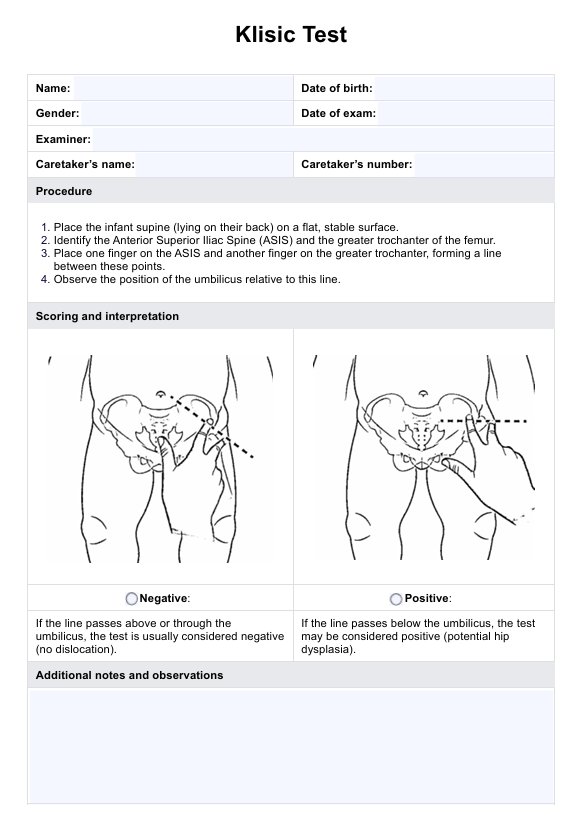The Klisic Test is a clinical examination technique used to assess developmental hip dysplasia in infants, focusing on the alignment of hip structures.

Klisic Test
Learn how to use the Klisic Test to detect infant hip dysplasia and guide early interventions. Try it with our template today.
Use Template
Klisic Test Template
Commonly asked questions
A positive Galeazzi sign, different from the Klisic Test, indicates uneven knee heights with the knees and hip flexed, suggesting a potential hip problem.
The Ortolani and Barlow tests, unlike the Klisic Test, involve maneuvering the infant’s hips to detect dislocation or instability; the Ortolani reduces a dislocated hip, while the Barlow dislocates an unstable but located hip.
EHR and practice management software
Get started for free
*No credit card required
Free
$0/usd
Unlimited clients
Telehealth
1GB of storage
Client portal text
Automated billing and online payments











